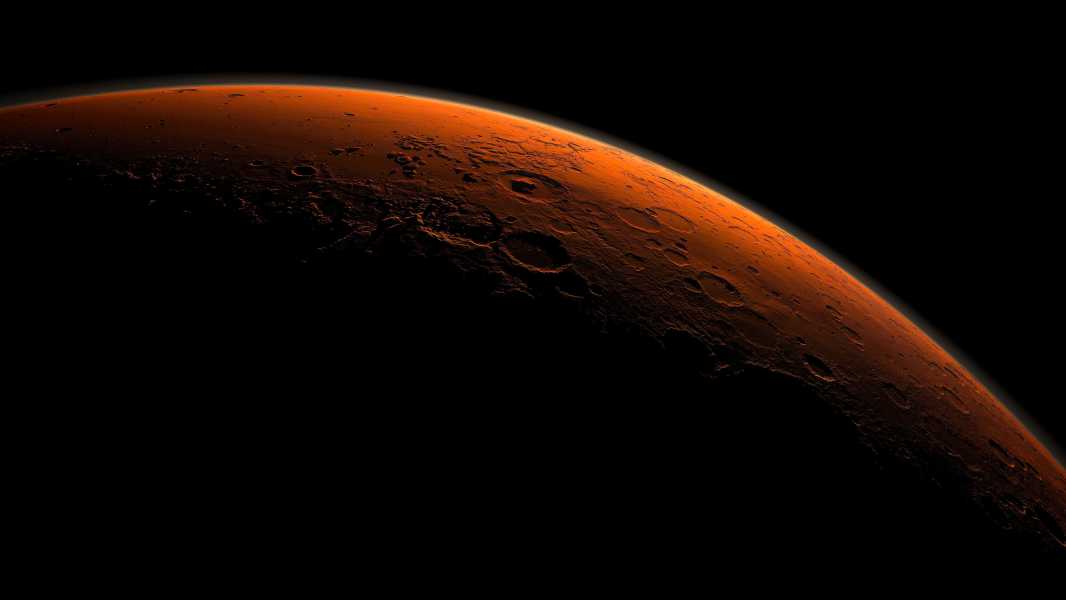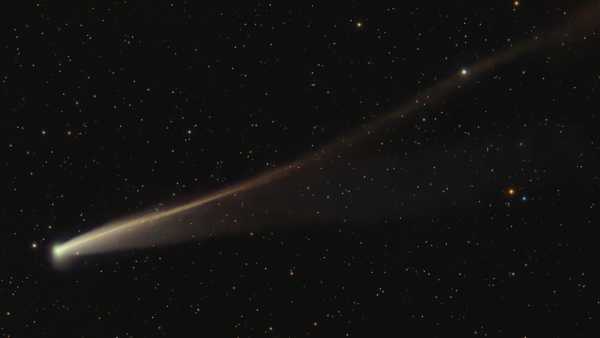
An artist's illustration of Gale Crater on Mars beginning to receive morning light. (Image Credit: Universal History Archive/Universal Images Group via Getty Images)
NASA's Curiosity rover has found some of the most compelling evidence yet that Mars may have harbored ancient life, as well as an answer to the question of what may have wiped it out.
While drilling into rocks on Mount Sharp, the central peak of Gale Crater on the Red Planet, the rover found evidence of siderite, an iron carbonate that suggests Mars once had a carbon cycle. This suggests that conditions suitable for life, and therefore perhaps life itself, may have existed.
The discovery, hidden from satellite scanning, raises hopes that when samples collected by the Perseverance rover are returned to Earth, scientists may find evidence that ancient life once thrived on our now-desert neighbor. The researchers published their findings April 17 in the journal Science.
“When it became clear that these rocks contained siderite in such significant quantities, I was incredibly excited,” lead study author Ben Tutolo, an associate professor in the Department of Earth, Energy, and Environment at the University of Calgary, told Live Science. “One of the big questions in Mars science is, ‘Where are all the carbonates?’ So I immediately realized how important this discovery was.”
Over the past 4 billion years, Earth’s carbon cycle has become central to its habitability—the cycling of carbon between the atmosphere, land, and ocean, providing the key materials for all living organisms and creating the atmospheric thermostat for them to thrive. The slow carbon cycle makes up half of this system. Carbon dioxide emitted by volcanoes is absorbed by calcium-rich oceans, forming limestone rocks that are then buried back into the mantle, heated, and released again.
However, while Mars shows many signs that ancient rivers and lakes once crisscrossed its surface, neither rovers nor satellite scans have recorded any evidence of carbonate minerals that would indicate the existence of a carbon cycle.
The discovery of the Curiosity rover changes that picture. After landing in Mars’s Gale Crater in 2012, the rover traveled 21 miles (34 kilometers) of the 96-mile (154 km) impact crater, carefully examining its geology. In 2022 and 2023, Curiosity drilled four rock samples from the crater and analyzed the mineralogy with its onboard X-ray diffractometer before sending the results back to Earth.
When Tutolo and his colleagues analyzed the data, they found that the rocks not only contained traces of siderite, but were rich in it — accounting for between 5% and 10% of the sample’s total weight. Among the carbonate were other minerals, particularly water-soluble magnesium sulfate salts, which the researchers believe “masked” the siderite signal from satellite imaging.
“Because similar rocks containing these salts have been found all over the world, we suspect that they likely also contain abundant carbonate minerals,” Tutolo said. “The overall estimate of the carbonate likely contained in all of these deposits suggests that they may contain significant amounts of CO2, which has previously been linked to warming on Mars.”
“Unbalanced” cycle
The researchers believe that if their sample is representative of the entire planet, it likely indicates the existence of an “unbalanced” carbon cycle on Mars. Because Mars appears to have lacked plate tectonics similar to Earth, toward the end of its habitability, Mars likely recycled its atmospheric carbon through chemical reactions with acidic water, as evidenced by the presence of sulfate and iron oxide minerals.
Sourse: www.livescience.com





